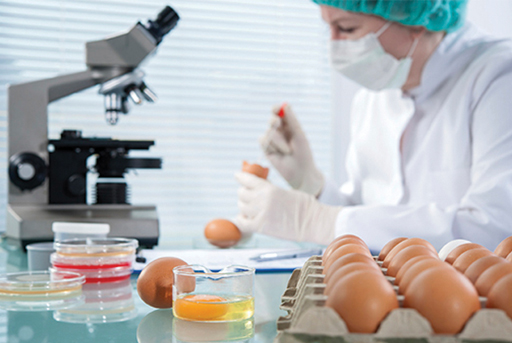2 Chemical analysis
Although manufacturers are not required to provide the percentage of all ingredients, they are able to use their knowledge of the ‘recipe’ to work out how many grams of the various components (fat, carbohydrate, protein, etc.) are in the finished product. They need to make allowances for any changes that occur during production: for example, water lost during baking.
Manufacturers need to know the data for each ingredient. For example, how much protein is in the flour used for making bread. This can be done by chemical analysis of the dried product in a laboratory (Figure 3).
Proteins contain the chemical element nitrogen, which is not present in significant amounts in carbohydrates and lipids. The nitrogen in the protein can be converted into ammonia which can be measured. This can then be used to calculate how much protein was originally present. Another technique causes the protein to react with a chemical which causes a colour change. Spectroscopy is then used to detect the colour change.
Similarly, for fat, solvents can be used to extract all the fat from a sample of the food. The extracted fat can then be chemically analysed, usually by techniques such as chromatography.
Now, life could be simpler. If you know how much protein and fat is in your component, by subtraction, the rest must be (almost entirely) carbohydrate and fibre. Different enzymes can be used to break down known types of carbohydrate into sugars, which can then be measured. And the rest must be fibre.
The processes involved are much more complicated than described here. But this should give you an idea of how food can be analysed in a laboratory.

